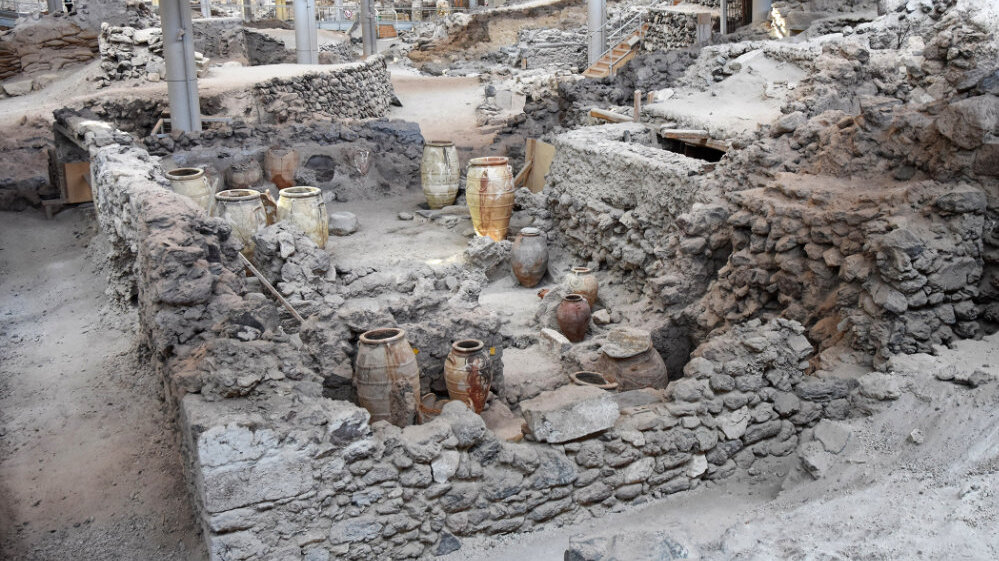Volcanic eruptions are spectacular, powerful and, up close, dangerous – that’s the prevailing image. In fact, large explosive eruptions can have global effects. In order to classify the size of volcanic eruptions, the volume of magma and the volume of sediment are determined. Volcanologists estimate these values to compare the size of different volcanic eruptions or to get a measure of the explosiveness of the eruption. However, it is often not possible to determine the values precisely. This makes it difficult to infer the actual volume of magma and to capture the full extent of such eruptions. Especially because the deposits from the most powerful historical eruptions are partially or completely submerged, making investigation difficult. So far, this has also prevented the exact size classification of past eruptions and thus a reliable risk assessment.
An international team of researchers led by marine geoscientist Dr. Jens Karstens from the GEOMAR Helmholtz Center for Ocean Research in Kiel has now for the first time combined the latest geophysical and geological methods to remeasure the 3,600-year-old Minoan eruption of Santorini, a Greek island, and an important gap in the understanding of large volcanic eruptions close. Their study has now been published in the journal Nature Communications. The analyzes presented there lead to one of the most precisely determined volume estimates of a major eruption ever and provide an approach to better classify and measure other volcanic eruptions worldwide. The publication thus provides the basis for better assessing the danger of such events and provides a more reliable benchmark for more precise determination of magma volume.
“Volcanic eruptions can have measurable effects worldwide, such as a global temperature drop,” confirms Dr. Karstens, first author of the study. “While we can estimate the risks of climate change through models and have a good understanding of the risk from earthquakes, we are significantly worse off when it comes to volcanoes. We have a blind spot there. It is therefore imperative that we more precisely assess the consequences of large explosive volcanic eruptions learn. In order to be able to better assess the risk of globally effective eruptions, it is necessary to know how often eruptions of a certain size occur. The basis for this are volume calculations that are as precise as possible. We have made an important contribution to this with our study on the Minoan eruption.”
The eruption, named after the earliest advanced civilization in Europe, the Minoans, took place around 3,600 years ago in the geological Holocene and buried an entire city, today the archaeological site of Akrotiri. Estimates from previous calculations suggested that the eruption ejected up to 86 cubic kilometers of magma. This would have made it one of the largest in the past 10,000 years. The new analysis by the scientific team results in significantly smaller numbers: At 26 – 41 cubic kilometers, the event at that time was only a third to half as large as it currently stands.
For the precise calculations, the researchers combined different methods from several trips. They were able to detect ash deposits from the Minoan eruption and determine the ash volume of the eruption in 41 drill cores obtained with a gravity corer during the research cruise POS513 from the research ship POSEIDON in 2017. Since ejected magma hardens with varying degrees of porosity, they used a computed tomography-based method to determine the pure magma volume actually ejected. Using seismic measurements recorded during research cruise POS538, they also mapped the deposits of pyroclastic flows – debris flows of hot gases, ash and debris released by the volcanic eruption – around the island. Just like the material that fell into the middle of the crater, the so-called caldera.
By combining the recorded data, the scientists were able to draw conclusions about the actual extent of the Minoan eruption. This is the first time that such precise values have been calculated for all individual components. Estimates of eruption volume have been based either on estimates of caldera collapse volume or on incomplete recording of eruption products. Both approaches are limited in their validity.
“Our results add another piece of the puzzle to understanding explosive volcanic eruptions and their dimensions. Eruptions can cost lives and even affect the climate. We are pleased that our research has contributed to a better understanding of these major events and thus to an improved risk assessment “, adds Dr. Karstens.
